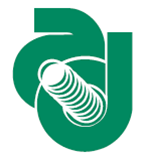Speaker
Francesca Bucci
(FI)
Description
NA62 is the last generation kaon experiment at CERN. Its main goal is the measurement of the $K^+ \rightarrow \pi^+ \nu \overline{\nu}$ branching ratio with 10\% accuracy. NA62 aims to collect 100 $K^+ \rightarrow \pi^+ \nu \overline{\nu}$ events in two years of data taking. Therefore, by assuming a $10%$ signal acceptance and a $K^+ \rightarrow \pi^+ \nu \overline{\nu}$ branching ratio of $10^{-10}$, at least $10^{13}$ $K^+$ decays are required. The challenging aspect of the experiment is the suppression of decay channels with branching ratio up to 10 orders of magnitude higher than the signal and similar experimental signature, such as $K^+ \rightarrow \mu^+ \nu$. To this purpose, good PID (Particle IDentification) and kinematic rejection are required. Precise timing is also needed to correctly associate the $\pi^+$ with the parent $K^+$ in a high rate environment.
The key element of the PID in NA62 is the Ring Imaging CHerenkov detector (RICH). The RICH detector is required to identify $\pi$ and $\mu$ in the momentum range between 15 and 35 GeV/c with a $\mu$ rejection factor better than $1\%$; it is also required to measure the $\pi$ arrival time with precision better than 100 ps and the Cherenkov angle with resolution better than 80 $\mu$rad.
The detector consists of a 17.5 m long cylindrical vessel with a diameter varying from 3.4 to 4 m filled with neon at atmospheric pressure and room temperature. The RICH vessel was installed at CERN in February 2014 and a full vacuum test was done in March 2014. Two semispherical mirrors with 17 m focal length placed at the downstream end of the vessel reflect the Cherenkov photons. Since the area covered by the mirrors is large ($\sim$ 3 m diameter) a mosaic of 20 hexagonal segments is used. The reflected light is collected by $\sim$ 2000 photomultiplier tubes (PMTs) with 18 mm pixel size and suitable quantum efficiency and timing performances. The PMTs are assembled in a compact hexagonal packing into two aluminium disks placed at the entrance window. Winston cones carved into the disks and covered with aluminized mylar are used to convey the light onto the active PMT area, thus increasing light collection by up to $20\%$. Quartz windows are used to separate the PMTs from the neon. The mirror segments are individually hanged on a light aluminium honeycomb structure and moved by means of two piezo-motors each, in order to align the light toward the two PMTs disks. The mirrors installation and alignment was completed in August 2014.
The PMT signal is sent to custom-made current amplifiers with differential output and then to NINO chips used as discriminators operating in time-over-threshold mode. The acquisition and trigger (TDAQ) system is based on an upgraded version of the LHC TELL1 board, called TEL62.
The RICH will stand a rate of about 10 MHz and will be a key element of the NA62 trigger system. A three-level trigger system will reduce the 10 MHz detector rate to about 10 kHz. The level 0 (L0) is an hardware trigger which will decrease the event rate from 10 MHz to 1 MHz, employing the signals from the RICH, the photon veto system and the hadronic calorimeter. The levels 1 and 2 (L1/2) are software triggers which will reduce the rate of the events to the kHz level. At higher trigger level the RICH will provide the number and the position of the Cherenkov rings, helping to reject events with more than one ring and charged particles with $\beta=1$.
At the beginning of the NA62 pilot run, from mid October to mid December 2014, the RICH detector was completely installed and ready to take data. The installation details and the preliminary results on the detector performances and on the PID system of the NA62 experiment will be presented at this conference.
Collaboration
NA62 Collaboration
Author
Francesca Bucci
(FI)
Co-authors
Andrea Bizzeti
(FI)
Antonino Sergi
(CERN)
Antonio Cassese
(FI)
Enrico Iacopini
(FI)
Giuseppina Anzivino
(PG)
Massimo Lenti
(FI)
Mauro Piccini
(PG)
Monica Pepe
(PG)
Patrizia Cenci
(PG)
Roberto Ciaranfi
(FI)
Roberto Piandani
(PI)
Stefano Lami
(FI)
Viacheslav Duk
(PG)

